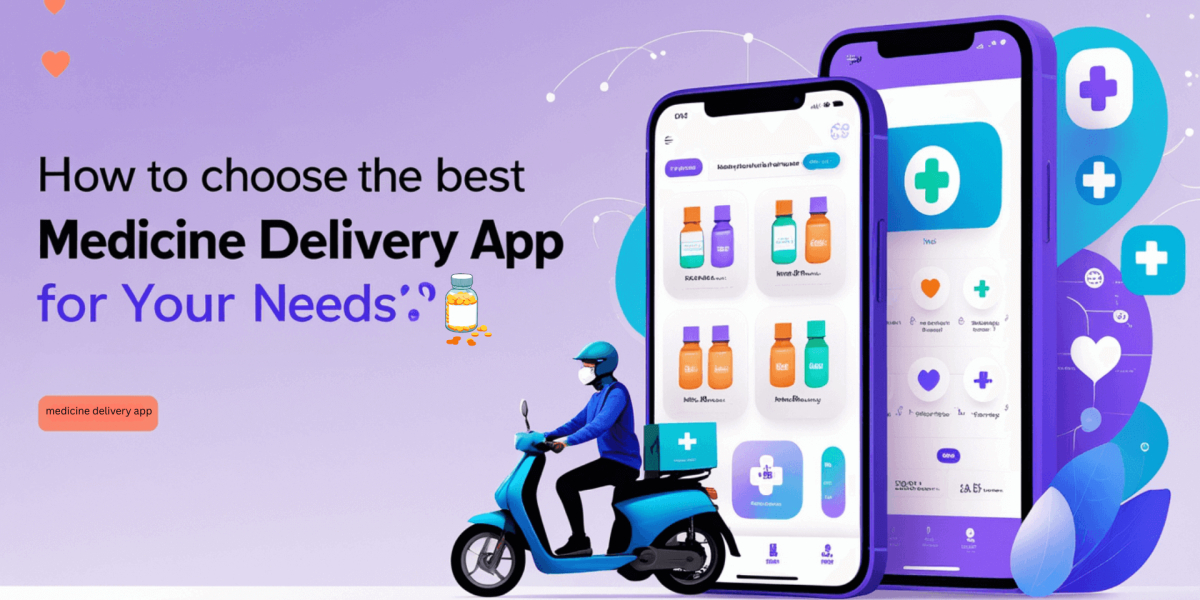The Web Developer’s Toolkit: Essential Resources and Best Practices
- By John Mortan
- 13-06-2024
- Web Development

The role of a web developer has grown in significance in this modern digital era. Because they provide a digital interface for customer connection, commerce and brand representation, websites are the basis of businesses.
To create successful, secure and intuitive websites, web developers need to have the right tools and follow best practices. In today’s fast-paced era, being aware of and using the latest and relevant tools and techniques is a necessity.
In order to stay competitive in a constantly developing sector, this article explores best practices and essential resources for web developers.
It also delves further into the topic of web development. Our thorough guide includes everything you need to advance your web development skills, from strong frameworks to effective version control systems.
Essential Tools for Web Development
1. Code Editors and Integrated Development Environments (IDEs)
Choosing the right IDE or code editor is crucial for web design in New Jersey. These tools offer a platform for productive code writing and modification.
-
Visual Studio Code (VS Code):
This open-source, free-code editor has become popular due to its vast extension library and flexibility. It is an extremely versatile tool for web developers, supporting a multitude of programming languages, connecting with Git with ease and providing features like debugging, adaptable themes and IntelliSense.
-
Sublime Text:
Sublime Text, which is renowned for its simplicity and speed, has strong features that boost productivity, like split editing and multiple choices.
Because of its broad spectrum of customization options and extensive plugin ecosystem, which enable developers to customize the editor to their own requirements, it is a favorite among efficiency-focused individuals.
-
Atom:
Atom is a highly customized text editor developed by GitHub that works flawlessly with GitHub repositories. Because of its versatility, developers can customize the editor to meet their specific needs, which makes it perfect for team development. Atom's functionality and user experience are significantly enhanced by the wide range of plugins and extensions it supports.
2. Version Control Systems
For tracking code changes over time, enabling collaboration and averting conflicts, version control is essential.
-
Git:
Git, the most popular version control system, allows developers to work on multiple branches at once, log changes and roll back to earlier versions. Git is made more functional by platforms like GitHub, GitLab and Bitbucket. Which offer cloud-based repositories and tools for collaboration.
3. Frameworks and Libraries
By offering pre-written code and components, frameworks and libraries streamline web development and expedite the process.
-
React:
React is a widely recognized JavaScript library developed by Facebook that is used to create user interfaces, especially for single-page apps.
Because of its component-based architecture, which promotes reusing and maintainability, developers may create UI components that are efficient and modular. Performance is improved through React's virtual DOM, which optimizes rendering and updating.
-
Angular:
Angular is an efficient platform to develop desktop and mobile web applications, and it is maintained by Google. Angular, an established framework with a wealth of features, offers a complete solution perfect for big projects. It has features like dependency injection, two-way data binding and a modular architecture for successful development.
-
Vue.js:
Vue.js is a progressive framework that has been developed for crafting user interfaces. It is popular for its simplicity and flexibility. Its ability to scale smoothly with increasing complexity and its effortless integration into projects make it a popular choice for developers looking for efficient and adaptable web development solutions.
4. Task Runners and Build Tools
Streamlining repetitive tasks like minification, compilation and testing with task runners and build tools improves efficiency and consistency.
-
Webpack:
A powerful module bundler for JavaScript apps is known as Webpack. It simplifies dependency management and optimizes performance by efficiently combining various modules and assets.
Webpack is now a standard tool for web development projects, helping developers optimize code for end users and streamline processes with its rich feature set and plugin ecosystem.
-
Gulp:
Task runner Gulp automates a variety of web development activities, including minification, browser reloading and CSS preprocessing.
By treating files as streams and reducing disk I/O operations, its streaming build system improves efficiency. Gulp is a top option for developers looking to automate tedious processes and optimize the way they develop because of its ease of use and flexibility.
-
Grunt:
Another prominent task runner in web development is known as Grunt. Thanks to its extensive ecosystem of plugins, it makes the automation of repetitive tasks like minification, compilation and unit testing simpler.
Grunt is a useful tool for simplifying the development process and improving efficiency because of its configuration-based procedure, which enables developers to efficiently design and manage activities.
5. Package Managers
Package managers make it easier for developers to install, update, and uninstall libraries and tools by simplifying the handling of project dependencies.
-
npm (Node Package Manager):
The main package manager for the JavaScript runtime environment Node.js is known as npm or Node Package Manager. It serves as a repository for an extensive variety of packages that can be easily integrated into Node.js apps.
With npm, developers can access an extensive ecosystem of tools and modules, which simplifies up the software development process and makes it easier to develop solid applications.
-
Yarn:
Facebook's Yarn solution is a major advancement over npm when it comes to dependency management. By providing deterministic dependency resolution, it improves package installation and management speed and reliability.
Developers may reduce any potential issues related to package versions and dependencies by using Yarn to guarantee consistent and predictable builds. Yarn's increased efficiency makes it an invaluable tool for modern web development procedures.
Best Practices in Web Development
1. Write Clean and Maintainable Code
Clear code is easy to read, understand and maintain. Maintaining a stable and scalable codebase is ensured by following coding standards and best practices.
-
Comment and Document:
Understanding the function and purpose of code via commenting and documentation is essential for future maintenance and teamwork. For other developers who could work on the project later, clear comments make it easier to understand the rationale behind each code block.
-
Consistent Naming Conventions:
Code readability and comprehension improve by giving variables, functions, and classes meaningful and consistent names. Using consistent naming conventions across the project helps to foster effective collaboration and maintenance by ensuring that developers can quickly grasp the function and purpose of various components.
2. Prioritize Security
When it comes to web development, security needs to come first. By implementing security best practices, you may protect your application and user data from threats.
-
Input Validation and Sanitization:
To avoid security threats like SQL injection and cross-site scripting (XSS), web developers must perform input validation and sanitization. Developers must first check and clean the user inputs to limit the possibility of allowing malicious code inside systems, thus strengthening application security.
-
Use of HTTPS:
Implementing the safety of data transmitted between clients and servers needs the use of HTTPS. HTTPS secures sensitive data from possible attackers by encrypting this communication to prevent interceptions and manipulation. Adopting HTTPS reduces the danger of data breaches and illegal access while also improving user trust.
3. Optimize Performance
Optimizing performance is essential to providing a quick and responsive user experience. Poor user satisfaction and high bounce rates can result from slow websites.
-
Minimize HTTP Requests
Minimizing the number of HTTP requests is essential to improving the speed of websites. The number of requests that developers send to the server can be greatly decreased by merging files and using CSS templates. A better user experience and quicker load times are the results of this decrease in requests. Let's examine some effective ways to put this plan into practice.
-
Use Caching Strategies
Caching techniques are an efficient way to store data that is regularly accessed, such HTML pages, CSS files, and JavaScript files. Temporarily storing this data in a cache lowers the frequency of data retrievals from the server, which speeds up subsequent loads.
-
Optimize Images
performance optimization of websites is greatly enhanced by image optimization. By reducing the file size of photos without sacrificing quality, compression helps save bandwidth and speed up load times. Web developers may guarantee quicker page loads and an improved user experience by optimizing photos.
4. Ensure Cross-Browser Compatibility
Web applications should work the same way on various browsers and hardware. Ensuring a flawless user experience requires testing for cross-browser compatibility.
-
CSS Resets:
In web development, applying CSS resets is essential to provide uniform styling across various browsers. CSS resets create a blank canvas by resetting default styles, which eliminates unexpected rendering variances. This approach lays the basis for a more standardized and cohesive visual presentation of web material.
-
Test Across Browsers:
It is essential to do routine testing of websites on various browsers and devices in order to identify and address compatibility issues. Developers can minimize rendering discrepancies and ensure a smooth user experience by cross-checking the site's performance across multiple platforms. Testing in different browsers makes a website more intuitive and accessible, making it suitable for a wider range of users.
5. Implement a responsive design.
Responsive design means that as a site is viewed across different devices, its functionality will not differ between a desktop and a smartphone.
-
Mobile-First Approach:
Accessibility and responsiveness across a range of devices are given importance in web development when a mobile-first approach is implemented.
By starting with mobile design, you can maximize user experience by making sure that the vital features are accessible by users on smartphones and tablets. This approach recognizes the growing popularity of mobile web browsing and emphasizes how crucial it is to support smaller screen sizes.
-
Flexible Grid Layouts:
The cornerstone of responsive web design is flexible grid layouts, which enable websites to smoothly adjust to various screen sizes.
Developers can design dynamic layouts that adapt to the size of the user's device by using frameworks like Bootstrap or the CSS grid. With this method, readability and uniformity are ensured on a variety of devices and resolutions.
6. Regularly Update Dependencies
It is imperative to maintain dependencies because of the security issues that emanate from outdated packages. Outdated libraries and frameworks can be also risky due to the presence of bugs and incompatibilities.
-
Monitoring for Updates:
It is essential to check for library and framework changes on a regular basis to ensure web application security and performance.
Updates often have bug fixes, security patches and performance enhancements to address vulnerabilities and improve functionality. Developers can reduce risks and protect the security and efficiency of their projects by keeping watchful and applying updates as soon as possible.
-
Automated Tools:
Automated tools play an essential role in web development since they streamline operations and increase productivity. Dependabot, for example, simplifies dependency management by monitoring project dependencies and automatically sending updates.
Using such technologies, developers can reduce manual effort, minimize errors and keep their projects up-to-date with the latest features and security updates.
Final Thoughts!
In the end, web development is a vast field that requires employing a variety of technologies and following best practices. You may improve productivity and expedite your development process by arming yourself with the necessary tools, such as package managers, task runners, frameworks, code editors, and version control systems.
Furthermore, you can make sure that your web applications are dependable, secure, and simple to use by following best practices like creating clean code, putting security first, maximizing performance, ensuring cross-browser compatibility, using responsive design, and updating dependencies.
Using these techniques and tools can increase your productivity as a web developer and help you produce web applications that are scalable, maintainable, and of the highest caliber to satisfy the constantly evolving requirements of the digital age.


.jpg)


